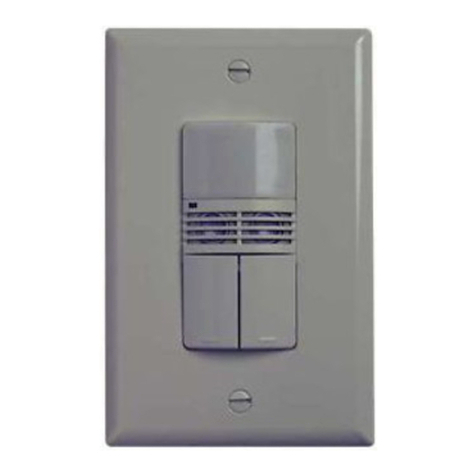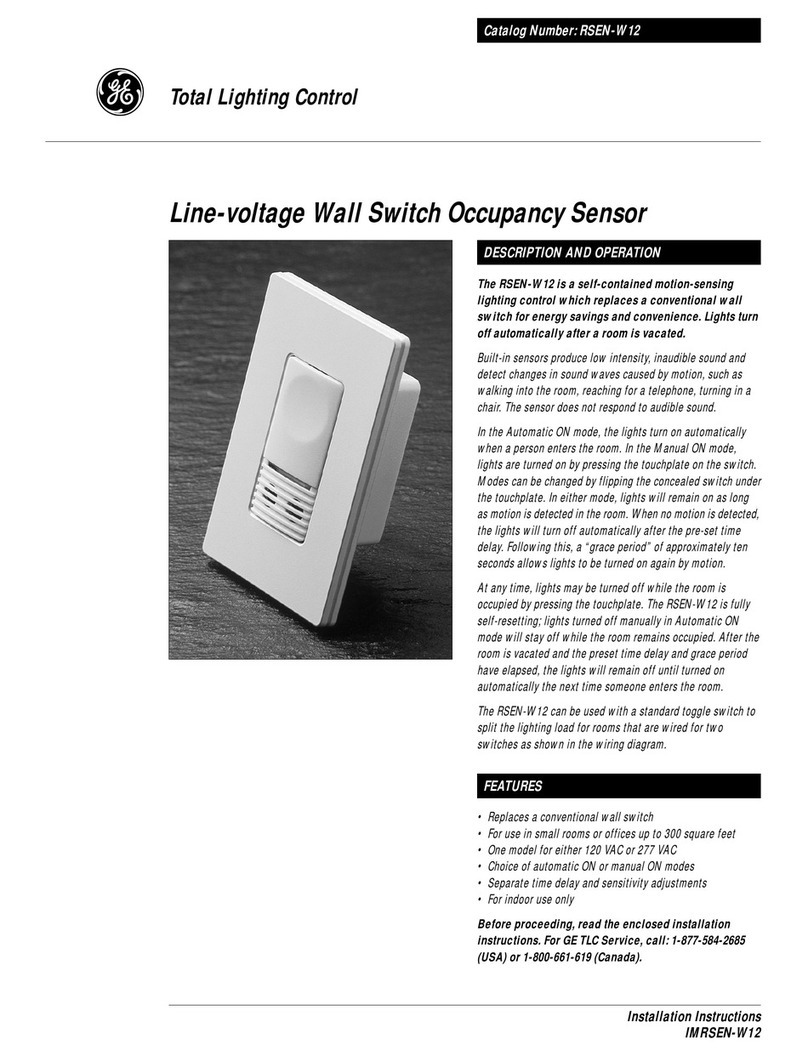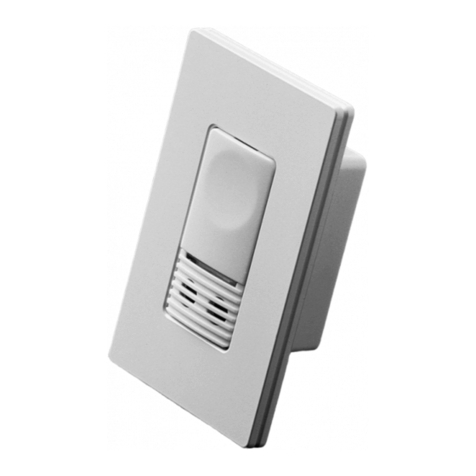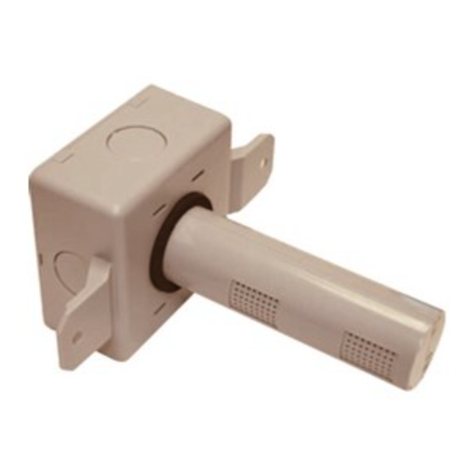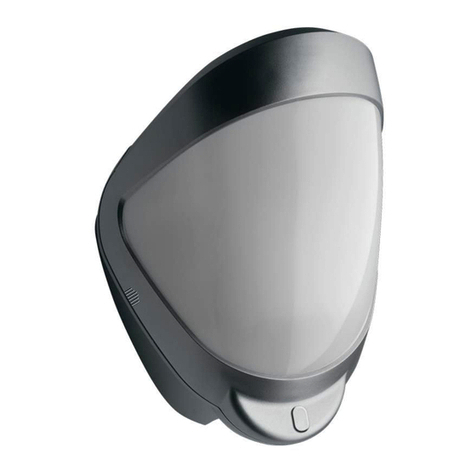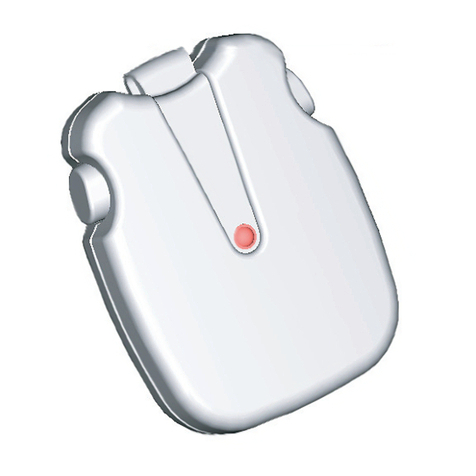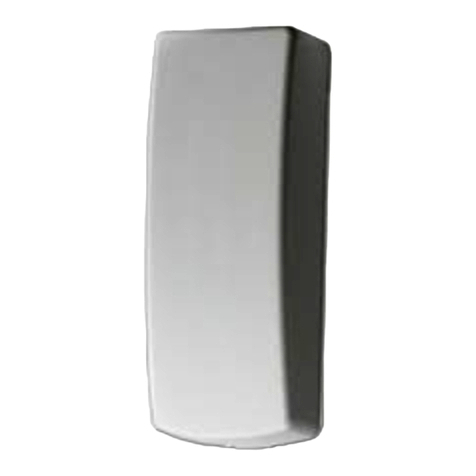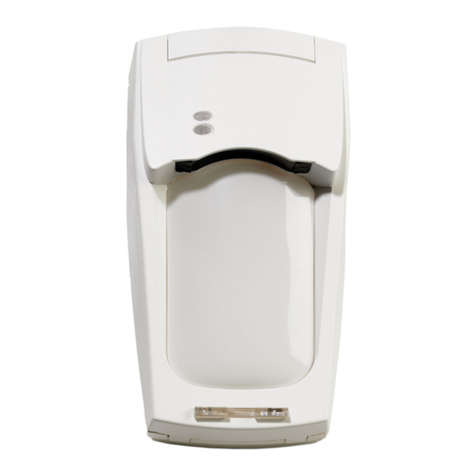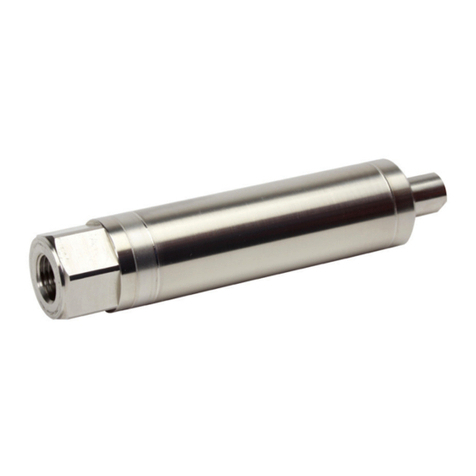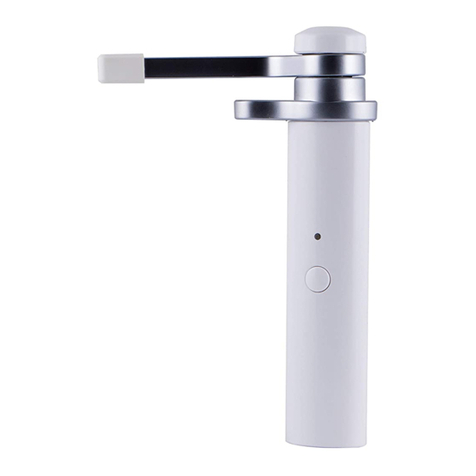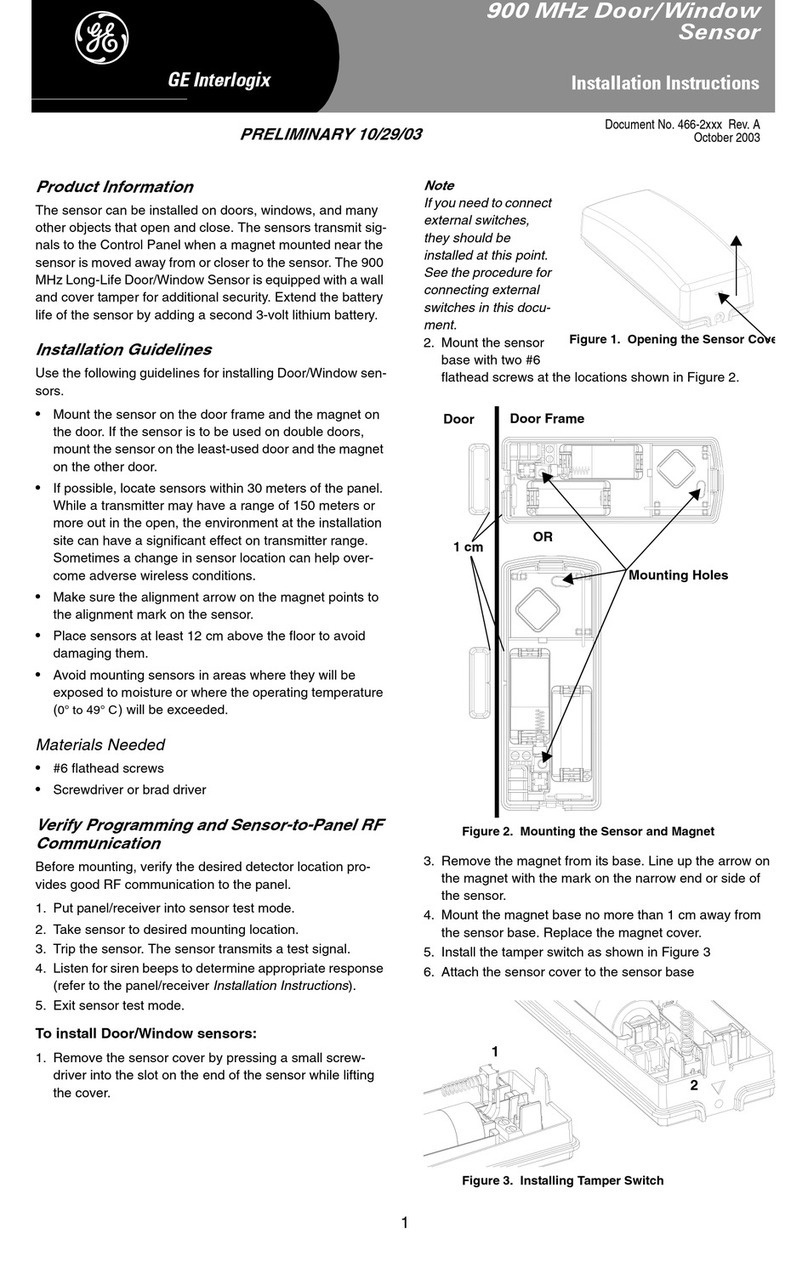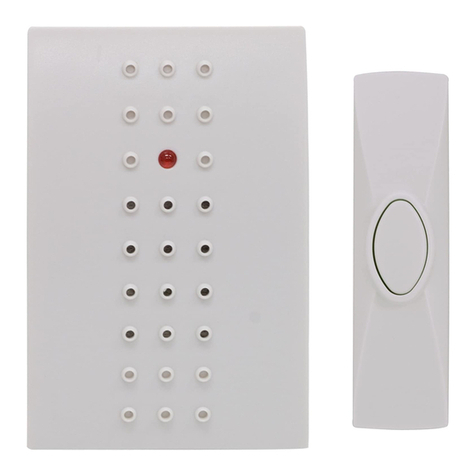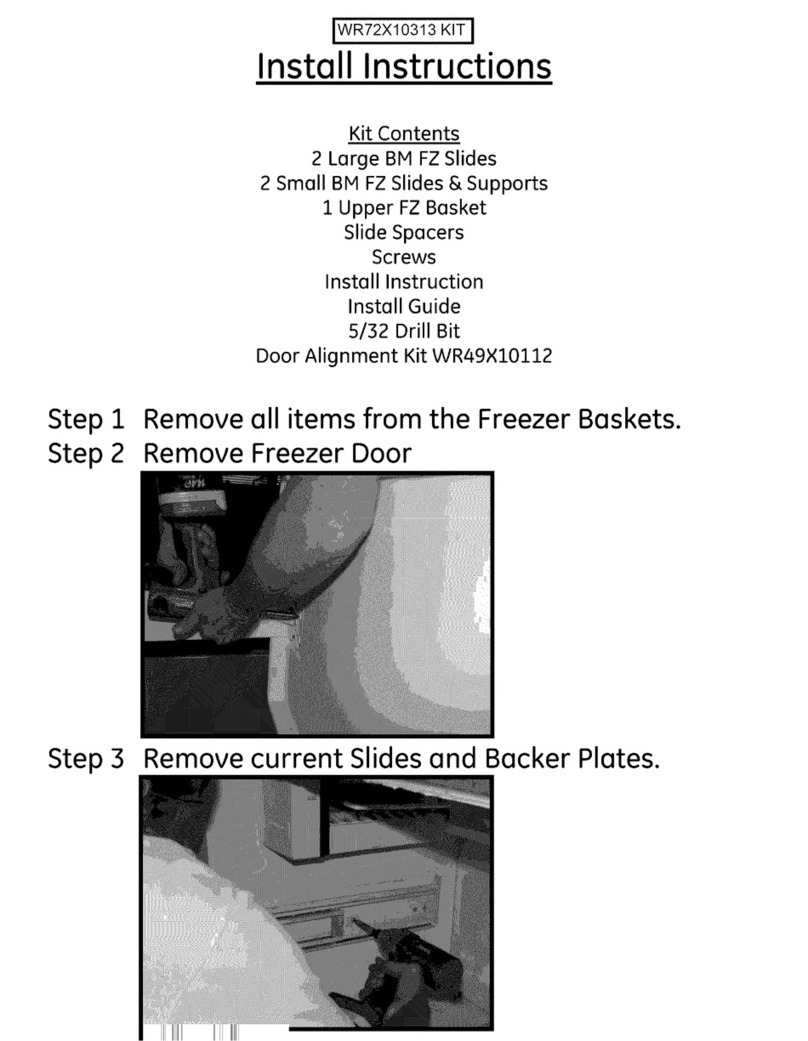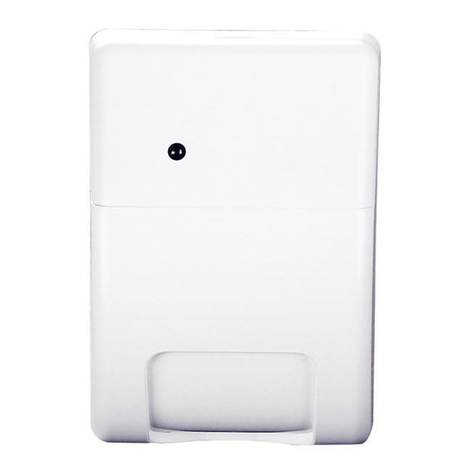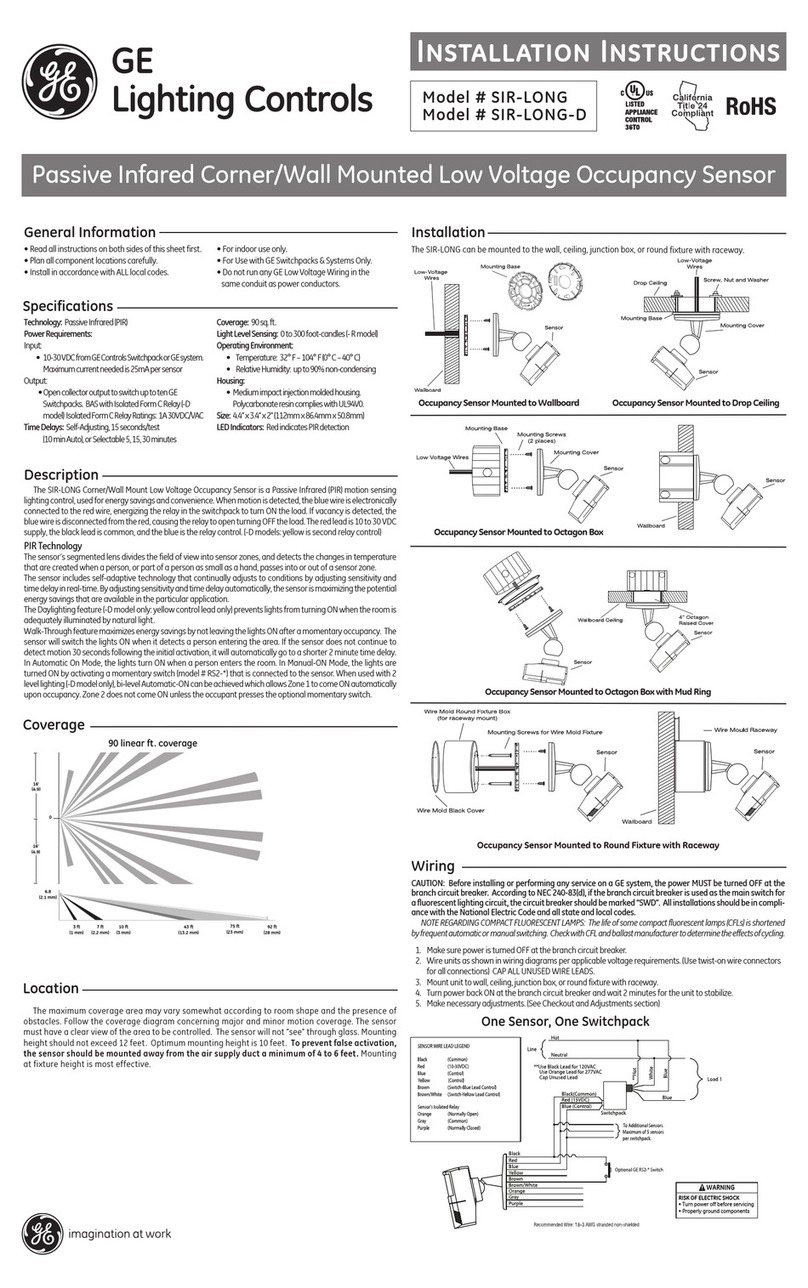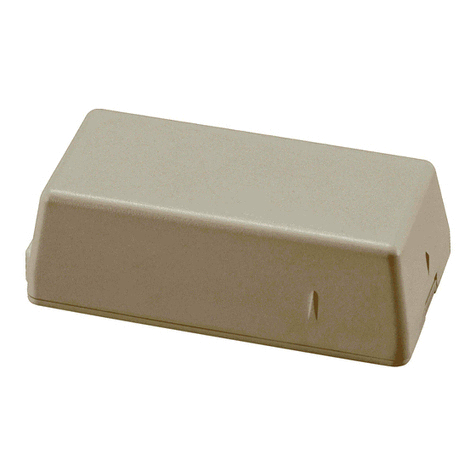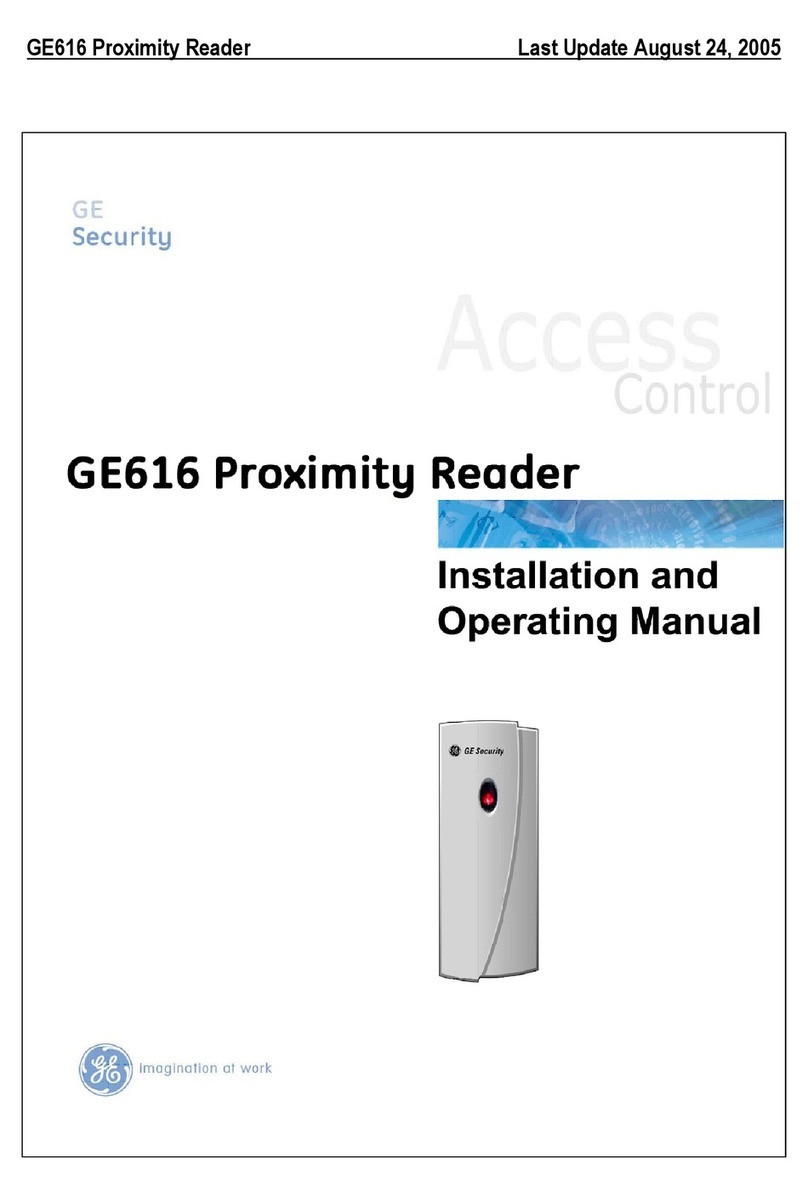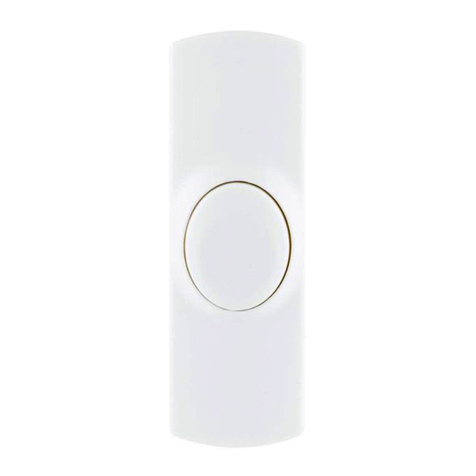
- 6 -
PB501, PB511, PB521
DÉTECTEUR PHOTOÉLECTRIQUE À FAISCEAU
MANUEL DINSTALLATION
1. Description du produit
Les détecteurs photoélectriques à faisceau PB501/ PB511/ PB521 sont
équipés dun émetteur (Tx) et dun récepteur (Rx) à infrarouges. Ils sont
conçus pour fonctionner en «porte ET». Une alarme nest générée que
lorsque deux faisceaux superposés sont interrompus simultanément. Si
un seul faisceau est interrompu, par ex. par un insecte ou une feuille
morte, lalarme ne se déclenche pas. Des canaux de fréquences à
quatre faisceaux sont disponibles pour éviter lintermodulation lorsque
plusieurs unités sont utilisées.
2. DESCRIPTION DES PIÈCES (FIGURE )
Le produit contient les éléments suivants. Veuillez vérifier si le colis est
complet.
1. Bornier; 2. Canal de faisceau; 3. Objectif; 4. Viseur; 5. Diode de
fonctionnement; 6. Réglage horizontal; 7. Réglage vertical; 8. Face;
9. Plaque de montage; 10. Diode dalarme; 11. Diode datténuation; 12.
Réglage du temps de réponse; 13. Fiche pour moniteur; 14. Vis
autotaraudeuse; 15. Plaque de montage sur piquet; 16. Bride pour
piquet; 17. Écran datténuation.
Figure : Conseils pour le choix de lemplacement du détecteur. Pas
dobstacles (penser aux changements de saison). Éviter la lumière vive.
Éviter les éclaboussures. Éviter les terrains meubles.
Figure : Distance de protection à lintérieur et lextérieur entre
lémetteur et le récepteur.
3. INSTRUCTIONS DINSTALLATION DES DÉTECTEURS
Éviter le câblage aérien.
Pour les installations à lintérieur, utiliser les mêmes procédures que
pour téléphones/interphones. À lextérieur, protéger le câblage par un
tubage ou utiliser des câbles blindés à enterrer.
Figure : Hauteurs dinstallation.
Figure : Régler lobjectif verticalement (1) et horizontalement (2) pour
permettre à lunité de fonctionner dans toutes les directions. Voir
exemples A-C.
Figure : Calcul de lexpansion du faisceau (A). (B = distance de
protection)
4. CÂBLAGE DU SYSTÈME
Figure : Configuration du bornier
Figure : Exemples de connexions
Figure : Distance de câblage (m)
Remarque 1 : La distance maximale de câblage lorsque deux ou
plusieurs appareils sont connectés correspond à la valeur
indiquée divisée par le nombre dappareils.
Remarque 2 : La ligne de signal peut être câblée à laide dun
câble téléphonique AWG22 (section ,65mm) dune longueur
max. de 1. m.
5. INSTALLATION
Montage en applique (figure a
Retirer la face de lunité et détacher la plaque de montage .
Casser le passe-fil de la plaque de montage et y introduire le câble
(après introduction du fil, appliquer un matériau détanchéité dans
lorifice). Fixer la plaque à laide des vis. Tirer le fil dans le boîtier du
détecteur et lattacher à la plaque.
Une fois le câblage terminé, procéder à lalignement, vérifier le
fonctionnement et remettre la face en place. Lunité est étanche. Il nest
pas nécessaire de la sceller avec un matériau détanchéité.
En cas de montage en surface, percer les trous perforables à
larrière de lunité:
A = câblage par le haut; B = câblage par le bas; C = trous perforables.
Tirer le câble comme illustré et lattacher à la plaque de montage.
Installation sur piquet (figure b
Introduire deux vis à tête ovale noyée (M4x20) dans une bride pour
piquet . Fixer la plaque de fixation et la bride sur le piquet. Retirer la
face de lunité et détacher la plaque de montage. Introduire deux vis
M4x10 dans la plaque de montage sur piquet et y attacher la plaque
de montage du détecteur. Poursuivre suivant les explications données
pour le montage en applique.
Installation dos à dos et à angle droit sur piquet (figure c
Fixer la plaque de montage de la première unité. Placer la bride pour
piquet de la seconde unité en dessous de la première et la fixer à
lenvers (bas en haut). Poursuivre selon les explications données pour
le montage en applique.
6. ALIGNEMENT ET UTILISATION DE LUNITÉ ( FIGURE d)
1. Vis de réglage vertical. Vers la droite: plus haut. Vers la gauche:
plus bas; 2. Réglage horizontal. 3. Viseur.
Retirer la face de lunité et brancher lalimentation. Régler le même canal
de faisceau pour lémetteur et le récepteur (canal 1 réglé par défaut en
usine). Pour aligner lobjectif de lémetteur sur celui du récepteur,
regarder dans le viseur placé entre les deux objectifs. Aligner
verticalement et horizontalement les optiques jusquà ce que lunité
opposée soit visible.
Figure e : Réglage fin de lalignement
1. Poursuivre le réglage fin de lunité jusquà ce que la diode datténuation
du récepteur séteigne (figure 14: 1. Diode dalarme; 2. Diode
datténuation; 3. Testeur 3-10Vcc; 4. Écran datténuation).
2. En cas dutilisation à lextérieur, placer un écran datténuation sur
loptique du récepteur et poursuivre le réglage fin jusquà ce que la diode
du récepteur séteigne. Il est recommandé de procéder aux réglages
à laide dun testeur. Vérifier le niveau du faisceau en introduisant le
testeur dans la prise pour moniteur située sur le récepteur. Pour vérifier
la tension de sortie du moniteur (1) pour les niveaux de faisceau
recommandés pour lextérieur (2) et lintérieur (3), voir le tableau de la
figure e. Procéder à un nouveau réglage si les mesures sont faibles
(4).
Remarque : Le tableau mentionne des tensions sans utilisation
dun écran datténuation.
Test de lunité: Tester une fois par mois. Marcher devant le
récepteur et vérifier si la diode du test de marche sallume lorsque le
faisceau est interrompu. Vérifier la fonction de relais en observant la
diode de statut sur la centrale dalarme.
Maintenance de lunité: Les unités ne requièrent quasiment pas de
maintenance, sauf lorsquelles sont situées dans des endroits sales ou
poussiéreux. Si nécessaire, nettoyer à laide dun chiffon humide.
7. RÉGLAGE DU TEMPS DE RÉPONSE
Figure f : Temps de réponse (secondes).
1. Réponse 0,05 s: course rapide.
2. Réponse 0,3 s: marche rapide.
3. Réponse 0,7 s: marche normale.
Lunité nest pas capable de détecter des objets qui se déplacent plus
vite que le temps de réponse paramétré. Toutefois, si lon augmente trop
le temps de réponse, on court le risque que lunité ne détecte plus les
intrus.
8. MODIFICATION DE LA FRÉQUENCE DU FAISCEAU
Il convient de modifier la fréquence du faisceau lorsquil existe une
possibilité dintermodulation ou de contournement des faisceaux. Cette
situation peut se produire en cas de protection linéaire ou biétagée.
Figure g : Réglage du canal de faisceau.
1. Régler lémetteur et le récepteur sur le même canal. Les unités noffrent
aucune protection lorsquelles sont réglées sur des canaux différents.
2. Pour régler le canal de faisceau dans une installation linéaire ou biétagée
de deux ou plusieurs unités, voir figure g. A: Protection linéaire;
B: Protection biétagée; C : Protection linéaire et biétagée.
Remarque : En cas de protections linéaires ou multiétagées, il
est recommandé de procéder à lalignement des faisceaux à laide
dun testeur pour augmenter la fiabilité de linstallation et dutiliser
la fonction de transfert de fréquence des faisceaux.
Dans les configurations multiétagées, utiliser des numéros de
modèles identiques pour les détecteurs supérieurs et inférieurs.
9. DIMENSIONS EXTÉRIEURES (FIGURE h)
1. Trou perforable; 2. Guide-câble.
F
